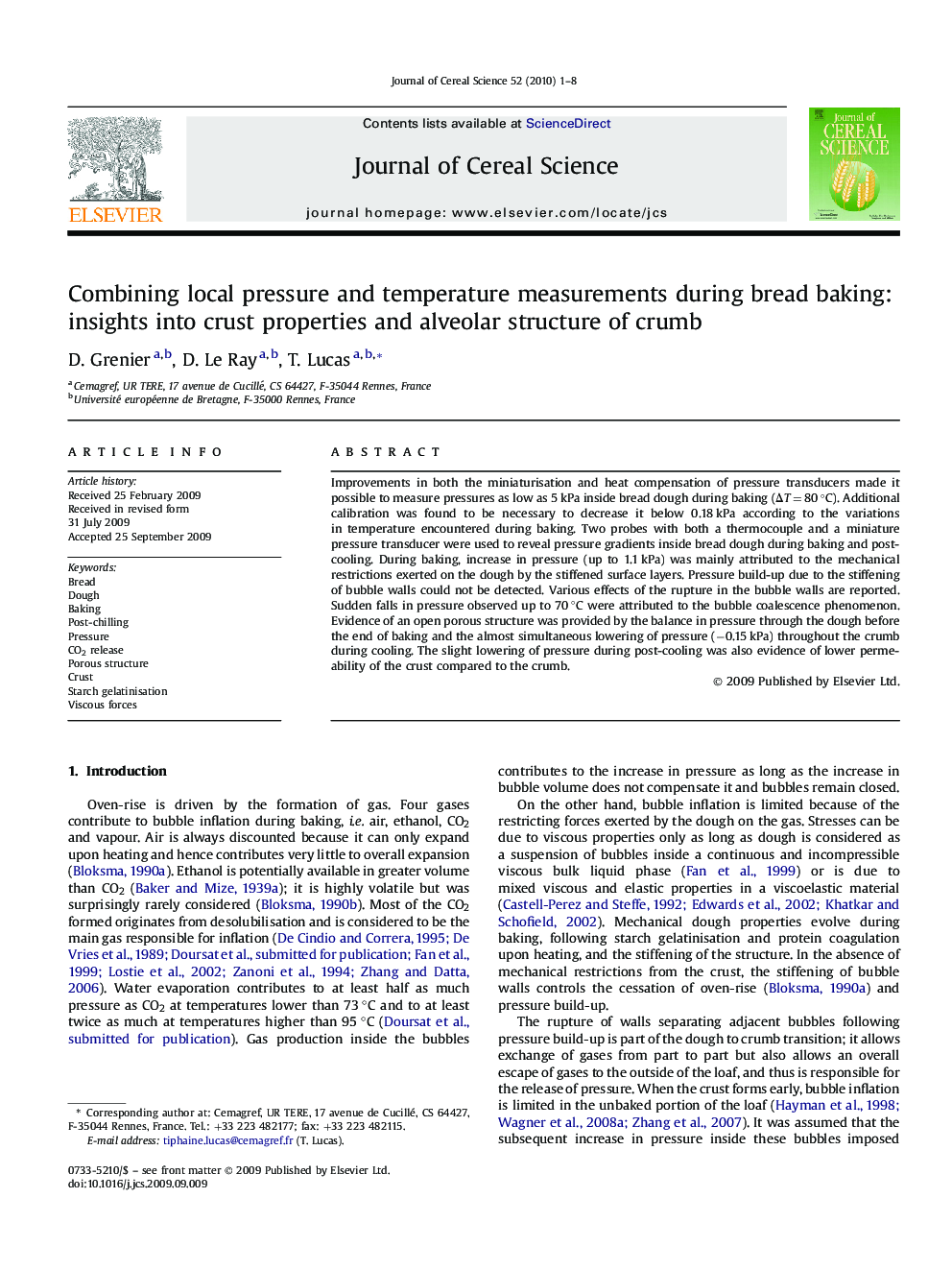| Article ID | Journal | Published Year | Pages | File Type |
|---|---|---|---|---|
| 4516054 | Journal of Cereal Science | 2010 | 8 Pages |
Improvements in both the miniaturisation and heat compensation of pressure transducers made it possible to measure pressures as low as 5 kPa inside bread dough during baking (ΔT = 80 °C). Additional calibration was found to be necessary to decrease it below 0.18 kPa according to the variations in temperature encountered during baking. Two probes with both a thermocouple and a miniature pressure transducer were used to reveal pressure gradients inside bread dough during baking and post-cooling. During baking, increase in pressure (up to 1.1 kPa) was mainly attributed to the mechanical restrictions exerted on the dough by the stiffened surface layers. Pressure build-up due to the stiffening of bubble walls could not be detected. Various effects of the rupture in the bubble walls are reported. Sudden falls in pressure observed up to 70 °C were attributed to the bubble coalescence phenomenon. Evidence of an open porous structure was provided by the balance in pressure through the dough before the end of baking and the almost simultaneous lowering of pressure (−0.15 kPa) throughout the crumb during cooling. The slight lowering of pressure during post-cooling was also evidence of lower permeability of the crust compared to the crumb.
